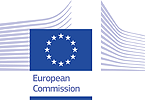Clot formation as a potential diagnostic tool and therapeutic target for Alzheimer's disease (ADvasculature)
Clot formation as a potential diagnostic tool and therapeutic target for Alzheimer's disease (ADvasculature)
Title: Clot formation as a potential diagnostic tool and therapeutic target for Alzheimer's disease (Acronym: ADvasculature)
Duration of the project: 24 months (15/01/2015-14/01/2017)
Scientist in Charge: Dr. Valentín FUSTER CARULLA
Name of Researcher: Dr. Marta CORTES CANTELI
The project targeted an important health problem related to Alzheimer’s disease (AD), which is the leading cause of dementia in the elderly. Drs. Fuster and Cortes-Canteli proposed to work on two different aspects of AD: the therapeutic part and the diagnostic aspect, both of them based in the fact that abnormally increased thrombosis is present in AD.
Accumulating evidence links AD with vascular risk factors. These correlations, together with profound alterations of cerebrovascular structure and function present in AD, suggest a “vascular hypothesis”, where vascular pathology eventually leads to neurodegeneration and subsequent cognitive decline. A decrease in cerebral blood flow has been reported in AD patients and, moreover, a correlation between the level of cerebral hypoperfusion and the degree of dementia has been identified. Previous in vivo experiments performed by Dr. Cortes-Canteli demonstrated that the AD brain is more prone to clot and more resistant to fibrinolysis. These obstructions in AD cerebral vessels could initiate and/or aggravate the brain hypoperfusion and inflammation present in the AD brain. Cerebral hypoperfusion seems to be a good indicative for dementia conversion, which suggests that the occlusion of vessels might be happening at very early stages of the disease, many years before the clinical manifestation of AD.
Drs. Fuster and Cortes-Canteli proposed to identify these occlusions in vivo using non-invasive imaging technology. They are taking advantage of the advanced imaging equipment available at CNIC to perform Magnetic Resonance Imaging, Computed Tomography and Positron Emission Tomography in AD mouse models. These techniques are being combined with specific antibodies that will allow to identify when and where the vessel obstructions begin as well as the specific components of these occlusions. This in vivo system could be used in combination with other biomarkers to help identifying individuals at early stages of the disease.
Also, Drs. Fuster and Cortes-Canteli proposed to analyze whether the use of new effective anticoagulants could be a potential therapeutic strategy as treatment for AD. This approach would normalize the increased thrombosis rate found in the AD brain, hence improving cerebral blood flow, neuronal function, and survival. This strategy could be a promising therapeutic approach to use in combination with others.
The text presented here reflects only the author’s view and the Union is not liable for any use that may be made of the information contained therein.
 | This project has received funding from the European Union’s Seventh Framework Programme for research, technological development and demonstration (Marie Curie Actions) under grant agreement no 624811. |






